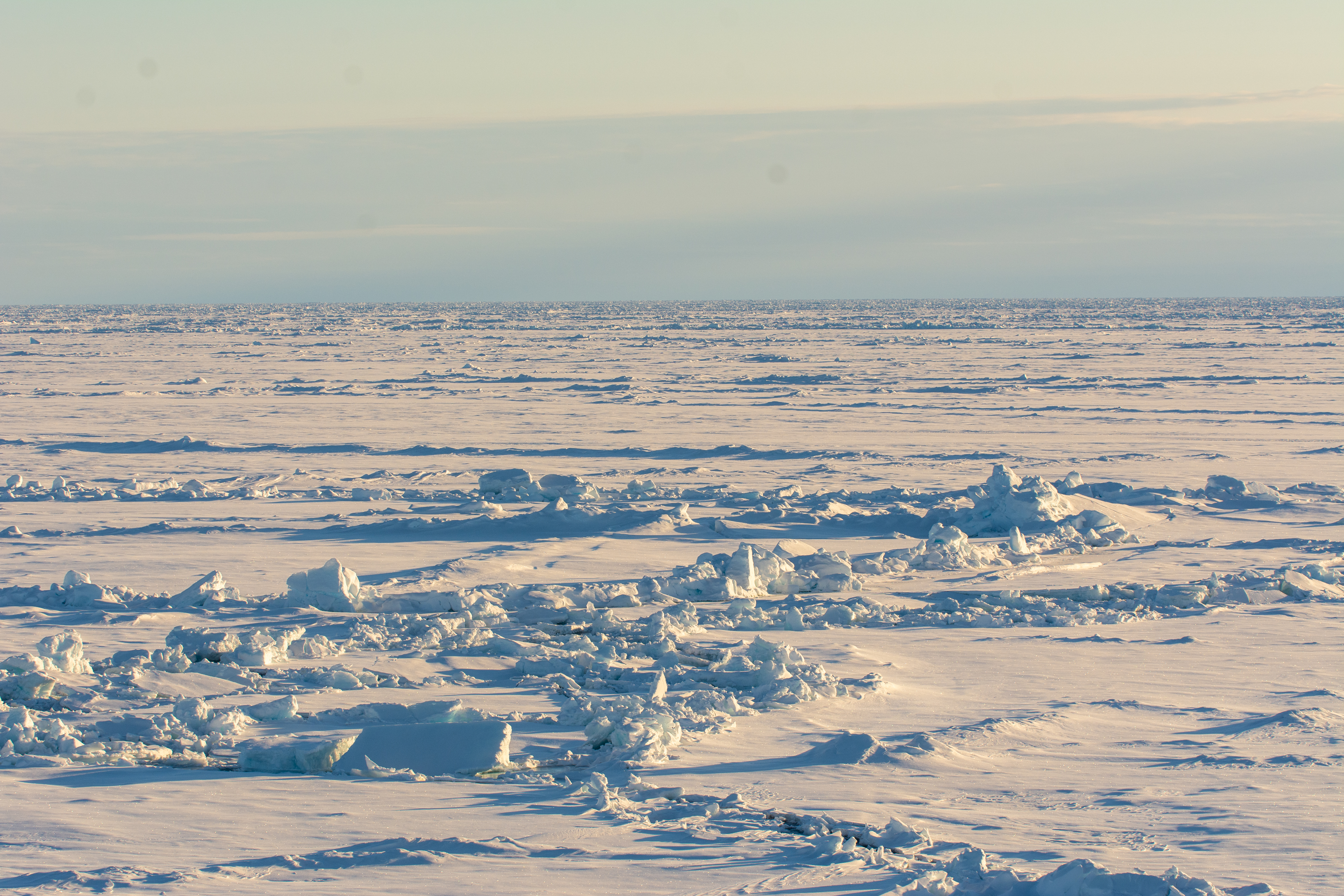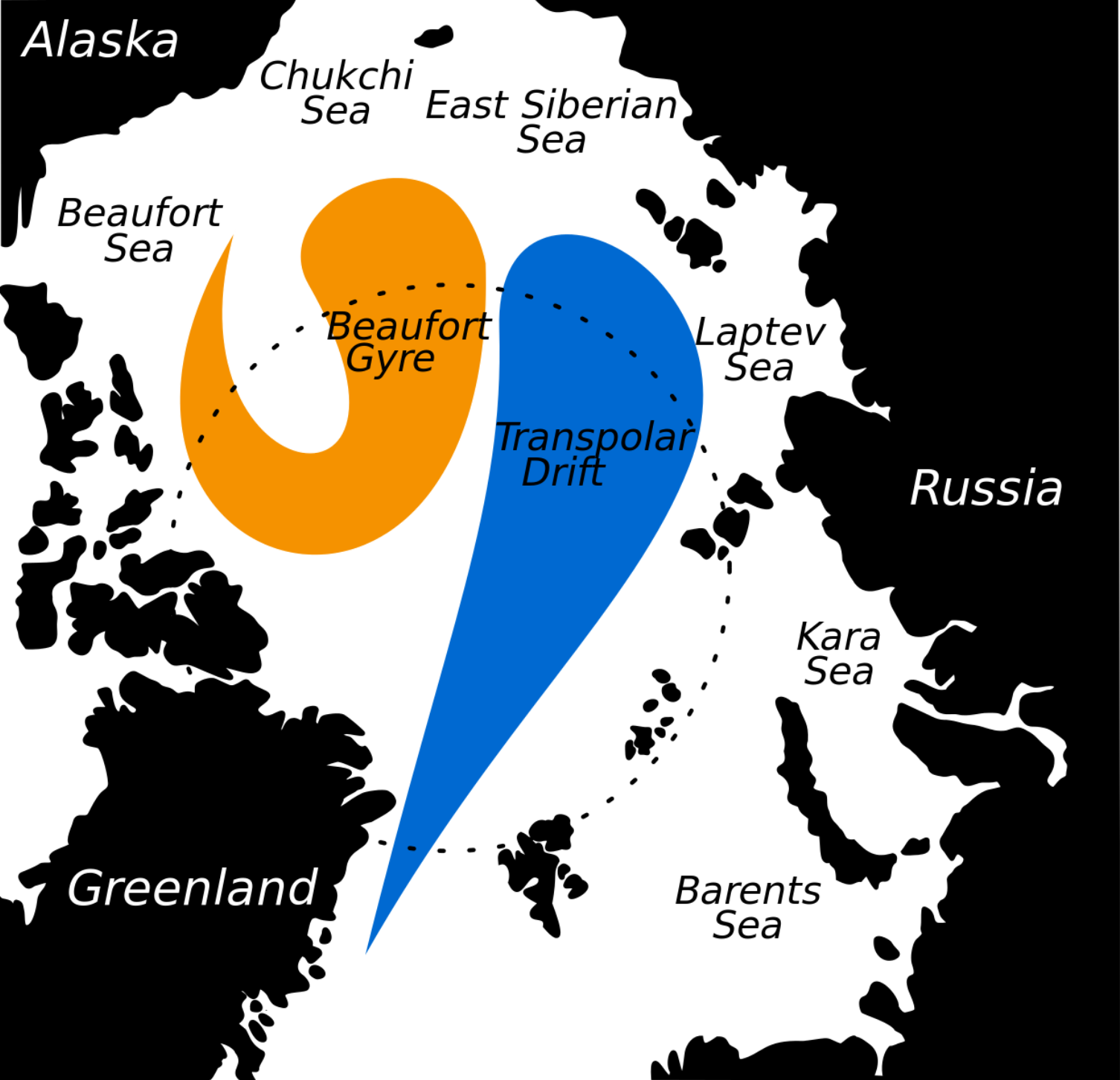
You probably know many things about the Arctic already: It lies north of the Arctic Circle, most of it is covered in lots of sea ice, it is affected by rising temperatures due to climate change, it is completely dark during winter and completely bright during summer, and polar bears live there, too. All these things are correct, but let's focus on the sea ice for a bit.
What is sea ice?
Sea ice forms when the ocean water, which is salty, freezes. So it is basically frozen saltwater, forming a sort of "lid" on top of the Arctic Ocean. In the Arctic winter, the area covered with sea ice expands, because it is dark and cold, and more ocean water freezes the longer the season goes. When spring comes around and the sun is back, sea ice starts melting because of warmer temperatures. The melting continues throughout the summer, and in September, the Arctic usually has the least sea ice throughout the year. Much of the sea ice does stick around for longer than a year though, and this is useful for investigating how it moves.
How does sea ice move?
This "lid" of sea ice is not sitting still in one place, it can be moved in different ways:
-
Winds drag and push sea ice around, and they can even cause cracks in the ice that freeze over again.
-
Also, since sea ice floats on top of the water, and what happens in the ocean influences the sea ice above it. Ocean currents - the ever-ongoing movement of the ocean water - can also move the sea ice on the surface, similar to winds.
The process of sea ice moving due to winds and currents is called sea-ice drift.
Where does the sea ice drift towards in the Arctic?

Two major systems exist in the Arctic Ocean, influencing where sea ice drifts. They are ocean currents, and they are the main forces moving sea ice.
One is called the Beaufort Gyre (orange in the map), and it swirls sea ice around clock-wise in the Beaufort Sea north of Alaska.
The other one is the Transpolar Drift (blue in the map), moving sea ice from the Siberian coast in Russia across the North Pole, and then south through the Fram Strait between Greenland and Svalbard - Norway's northernmost point. There, the sea ice melts, the further south it gets. These two dominant paths are common for sea-ice drift, and chances are, that sea ice in the Arctic is affected by one or both of them throughout its lifetime before melting.
How is the sea ice in the Arctic affected by global warming?
Just like your favourite ice cream in the summer months, sea ice melts when it gets warmer. This happens every year during the summer, and new sea ice freezes again in winter. It has been like this for a very long time. But in the last decades the average temperatures worldwide have been increasing. This is due to climate change. And the Arctic is the region where the temperatures have increased three times more than in many other places! With consistently warmer temperatures, more sea ice melts during summer, and less new sea ice forms in winter. Because of this, the area covered with sea ice is shrinking more and more! And this white cover on the dark ocean is actually really important for keeping our planet cool, and with it shrinking, temperatures on our planet will continue to go up.
